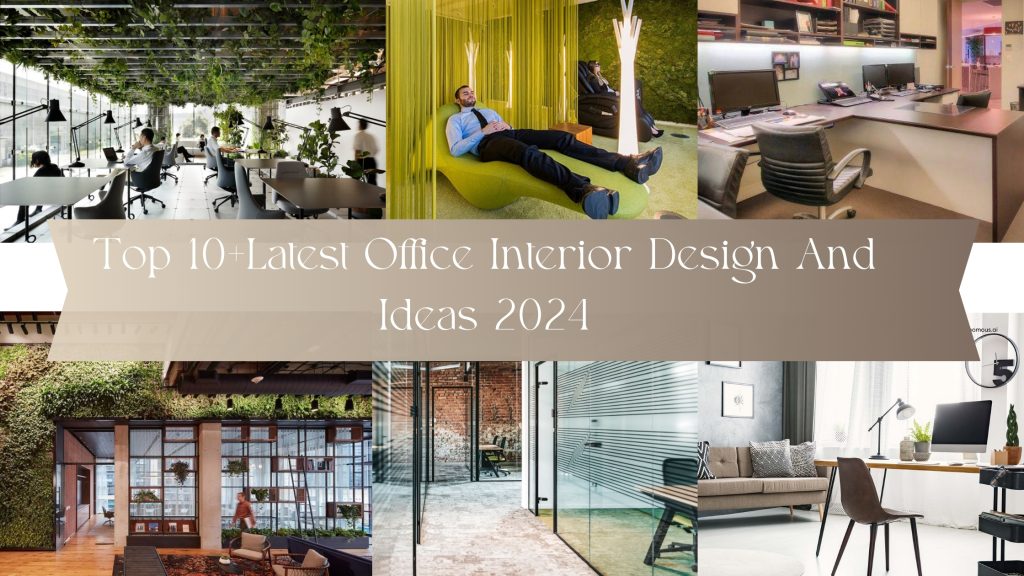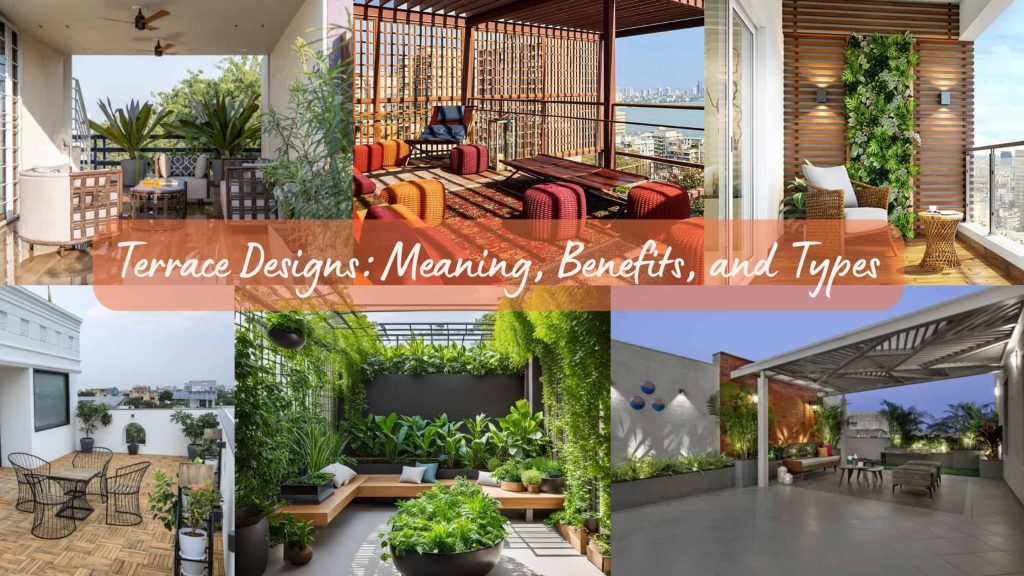A well-organized workplace is not just a luxury in today’s competitive business climate, but an essential. A thoughtfully selected office interior design boosts employee engagement and efficiency along with improving the workspace’s aesthetic. Understanding the details of office interior can be quite beneficial whether starting a new office or renovating an old one. This comprehensive guide will address all of the basics of office design, with a focus on small office interior design, low-cost options, and modern architectural ideas.
Understanding the Basics of Office Interior Design
Office design is the strategic arrangement of interior spaces to achieve a balance between visual appeal, performance, and productivity. furnishings, lighting, colour schemes, and design are important elements. The main goal while thinking about office interior design ideas is to create an atmosphere that speeds up work procedures and enhances the well-being of employees.
Also, If the budget is restricted, looking into low budget small office interior design can help to establish an attractive and useful workstation without going over budget.
10+ Best Examples Of Modern Small Office Interior Design
The focus of modern small office interior design is on simplicity, effectiveness, and ease of use of available space. These 10+ examples demonstrate how modern architectural ideas may be utilized to create efficient, trendy, and motivational workspaces in small offices.
1. Open Workspace with Modular Furniture


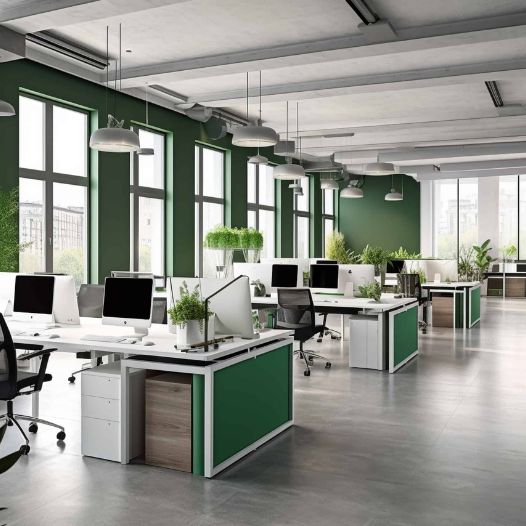
Modular pieces of furniture in an open office facilitate simple rearrangement. The place of work may be kept adaptable and flexible by rearranging the desks and seats to accommodate different positions and team sizes. The layout encourages collaboration as well as the interaction between workers, producing an exciting workplace. Movable desks and chairs are examples of modular furnishings that provide you with the ability to change the office’s structure according to evolving company needs. This design strategy could promote a variety of work ways within the same area, from collaborative tasks to focused solo work.
2. Minimalist Design with Clean Lines



A location that is peaceful and well-organized is created with a minimalist design clean lines and a muted colour scheme. A space can be perceived as larger and airier through the use of light-coloured or white walls, simple furniture, and sparse decoration. With a focus on simplicity and utility, this approach to design eliminates the use of unnecessary elements and focuses on what matters most. A simple workspace can reduce stress and enhance attention by reducing visual distractions. Using clean, modern furniture that matches the interior contributes to a more efficient and organized workstation.
3. Glass Walls and Partitions
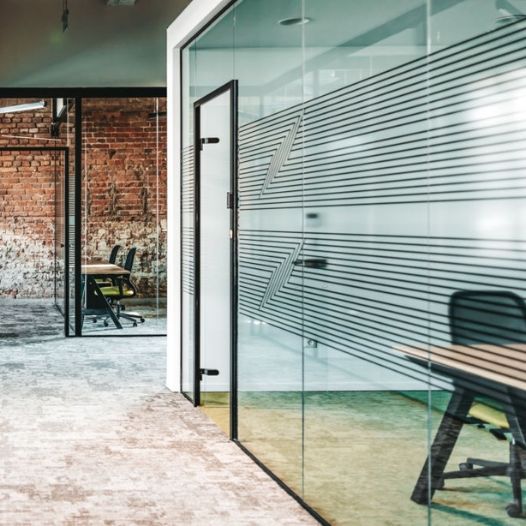


Glass obstacles and walls give privacy and provide a welcoming environment in place for concrete ones. The work environment seems light and airy because of this layout characteristic, which allows for lots of natural light. In addition to their attractiveness, glass walls can also be useful by serving as composed surfaces for brainstorming and presentations. The transparent nature of glass walls adds to the office’s perception of inclusiveness and togetherness by maintaining a sense of unity and openness even in areas designated for work alone or private meetings.
4. Compact and Efficient Storage Solutions
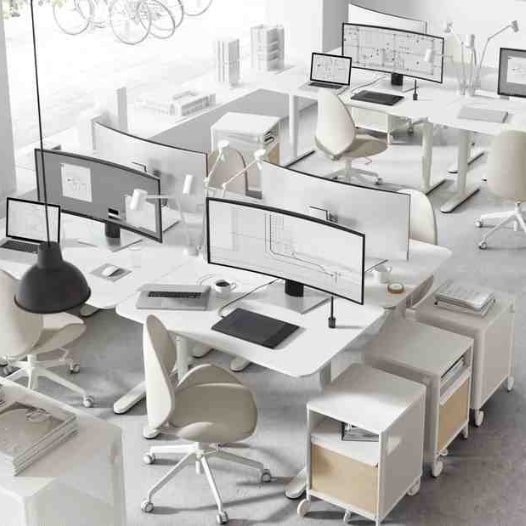
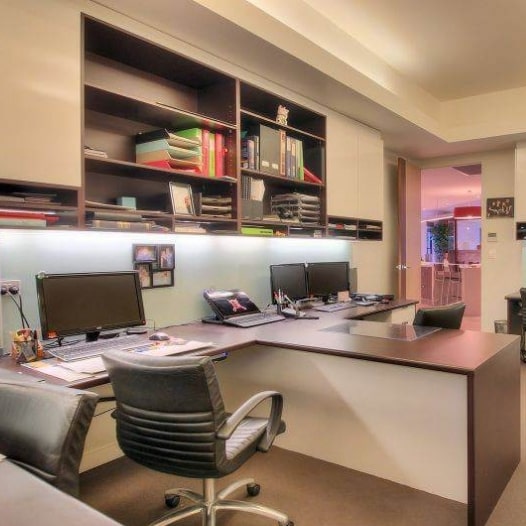
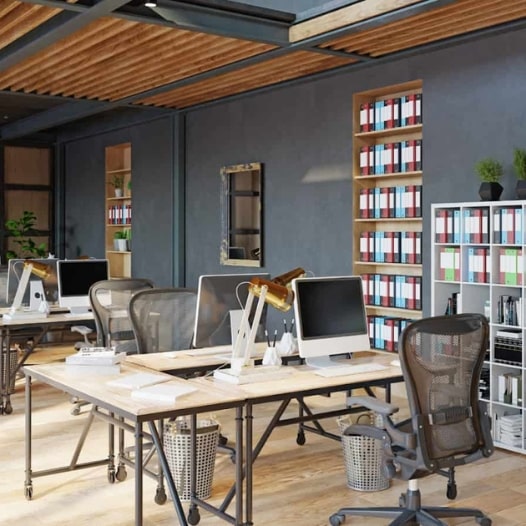
Modern small office designs utilize smaller sizes and efficient storage options. Space-saving mounted on the wall shelves, under-desk drawers, and multipurpose storage solutions all contribute to a neat and orderly workstation. By reducing waste and promoting a more efficient ambience, these solutions make it easier to keep an organized workplace. Moveable storage carts and modular units which can be rearranged as required for adaptability and versatility are some examples of innovative storage solutions.
5. Bold Accent Colors
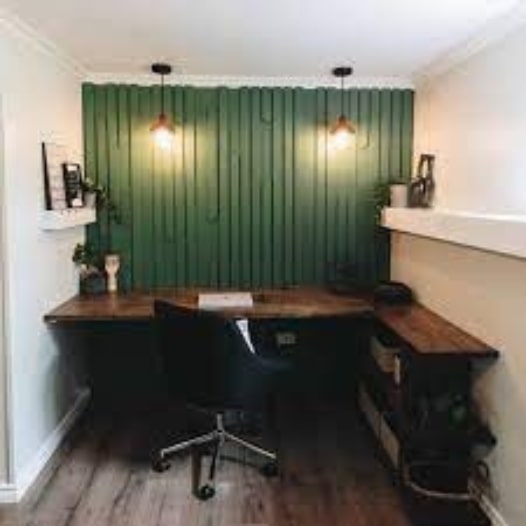
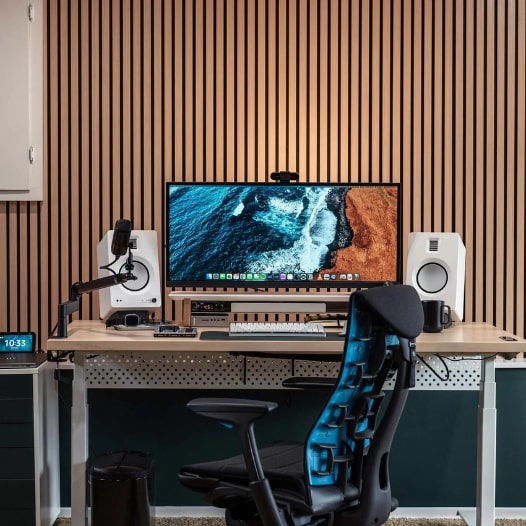
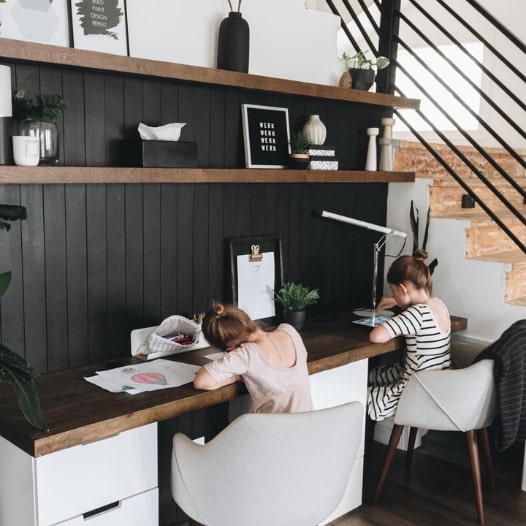
Even though modern design frequently employs a neutral colour scheme, introducing colourful accent hues can give the work environment independence and vibrancy. Colourful furniture or a focal wallpaper may add to the room’s vibrancy and attractiveness. Bright colours can be intentionally utilized to bring attention to specific areas or features, providing visual interest and encouraging originality. This strategy combines the clean lines of modern design with bursts of colour that reflect the business’s culture and sense of self, creating a look that is both fun and professional.
6. Flexible Meeting Areas
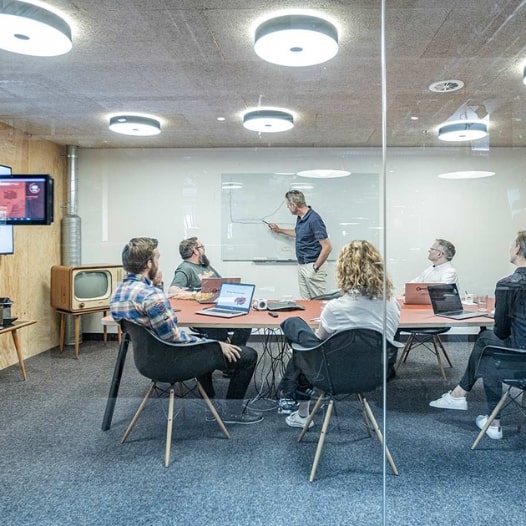
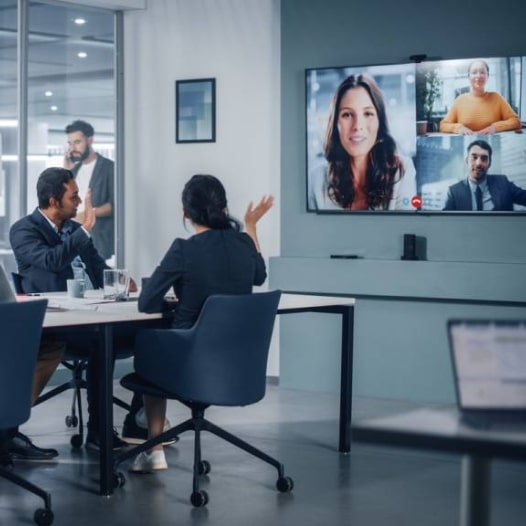
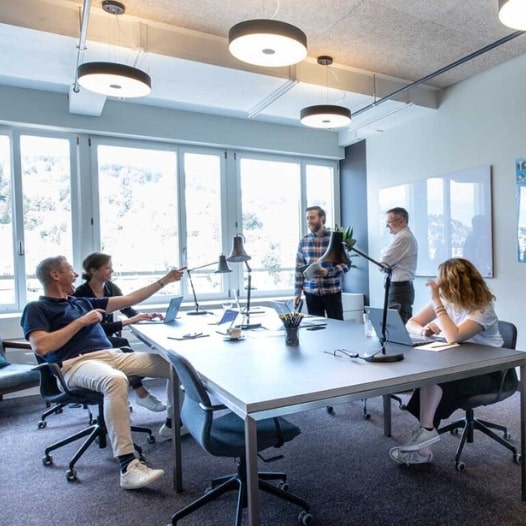
Create adjustable meeting spaces that may be utilized in many ways. Office functionality can be enhanced with movable furniture and partition panels which allow fields that can be rapidly converted into collaboration zones to private meeting rooms. Adjustable furniture, including tables that can be folded up or larger, and easily rearranged chairs, can be integrated into adaptable meeting spaces. Because of its capacity for change, the office is capable of supporting a variety of activities and collaboration, which promotes a more reactive and flexible work environment.
7. Art and Decor

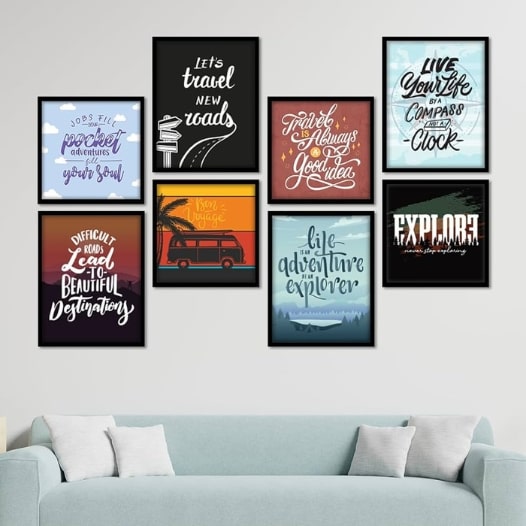
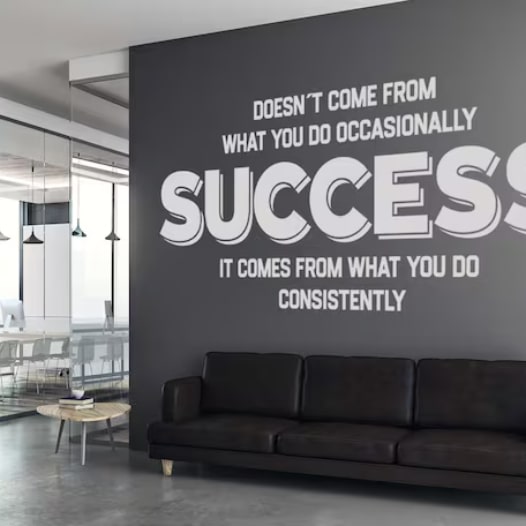
The office can be enhanced more inspiring and interesting by adding artwork and decoration that reflect the business’s identity and history. To balance the entire design, use components that are straightforward and modern. In addition to providing stimulation to the eye, artwork can serve as the centre of attention, providing the office character and charm. A unique and engaging atmosphere that attracts employees as well as visitors can be created with customized artwork, things produced by talented locals, and company-themed decorations.
8. Biophilic Design Elements
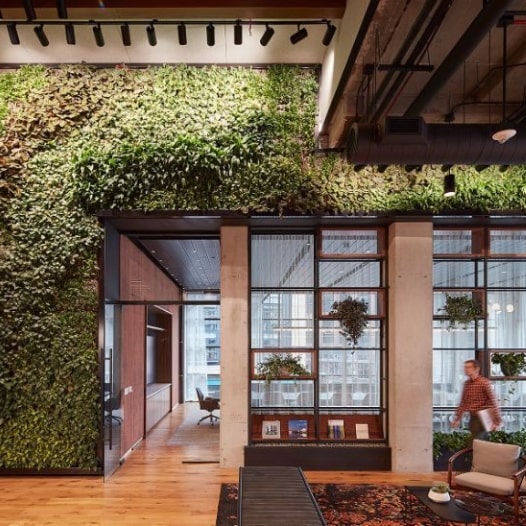
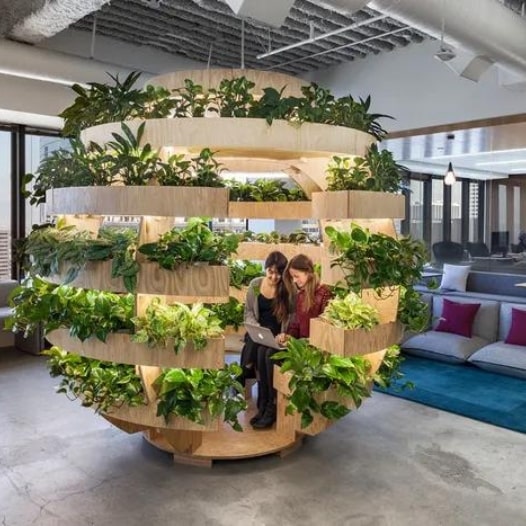
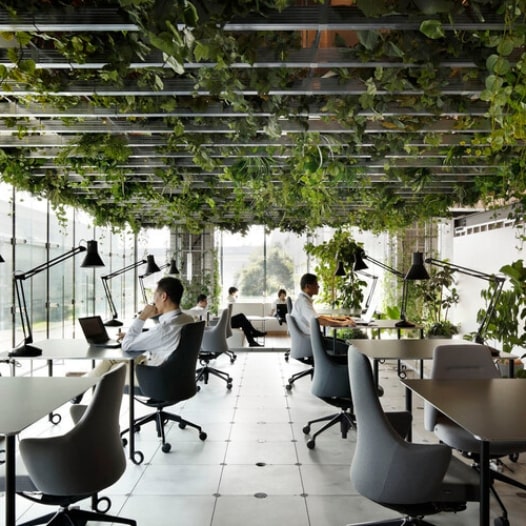
Incorporating biophilic design elements, such as indoor plants and natural materials, creates a connection to nature. Plants not only improve air quality but also add a calming and aesthetically pleasing element to the office. Natural materials like wood and stone can be used in furniture and decor to bring a touch of the outdoors inside, enhancing the overall ambience. Biophilic design has been shown to reduce stress, improve mood, and boost productivity, making it a valuable addition to modern office interiors. A variety of plants, from small desk succulents to larger floor-standing varieties, can be strategically placed to maximise their visual and health benefits.
9. Space for Relaxation
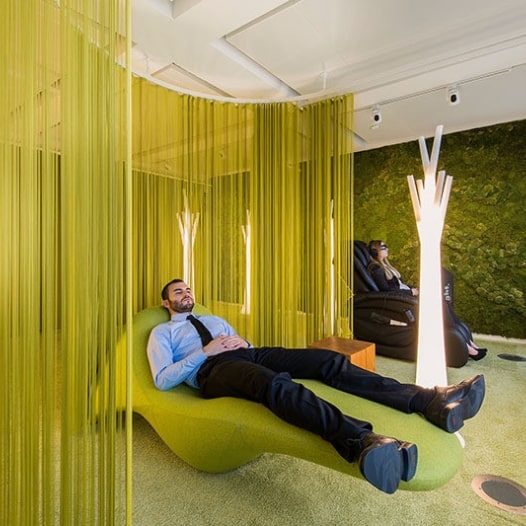
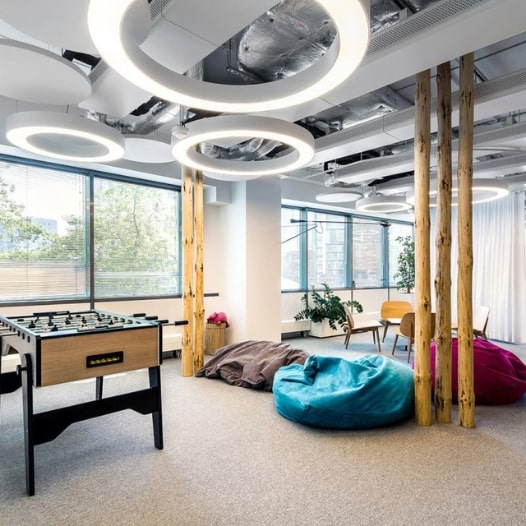
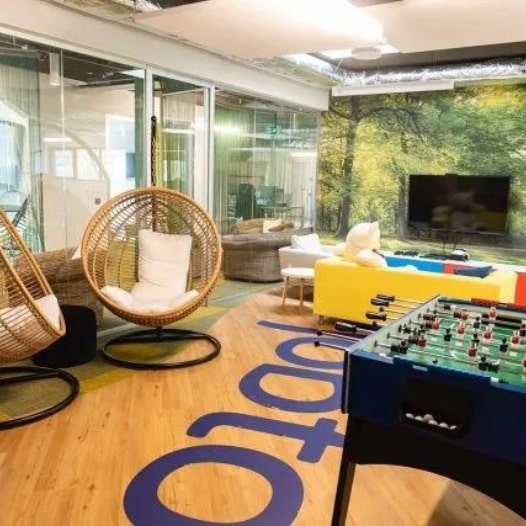
Set up a small area for resting and taking breaks. An attractive corner with soft lighting and comfy chairs may offer workers a much-needed break throughout the workday, improving their well-being and output. Recliner chairs, soft carpets, and peaceful decoration pieces may be found in relaxation areas, offering a peaceful haven from the strains of the workplace. These areas encourage regular breaks among workers, which assists in reducing stress and staving against burn and, in the end, produces a more pleasant and efficient work environment.
10. Customizable Workspaces
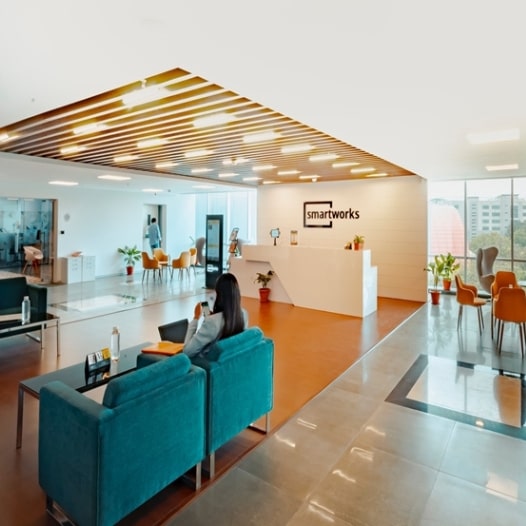
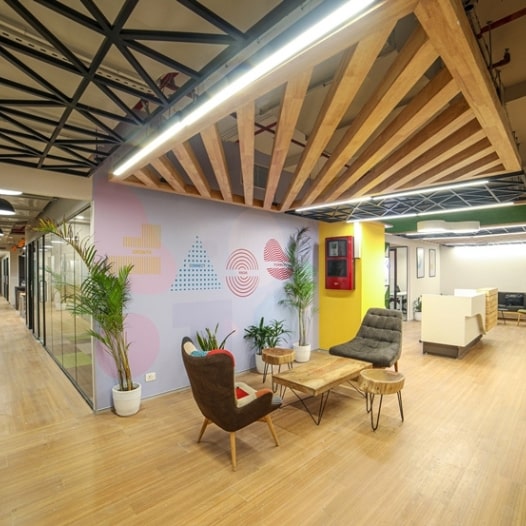
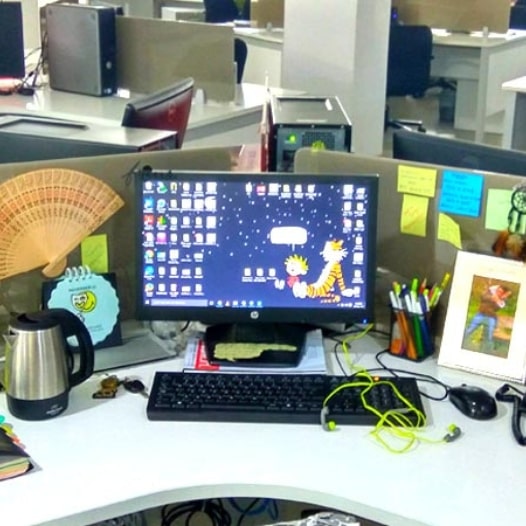
Work areas that can be customised to a worker’s tastes are an everyday aspect of modern design. This can include customised storage solutions, mobile workstations, and lights that can be changed. Adjustable workspaces allow staff members to create a workstation that best meets their specific needs and tastes, increasing comfort and output. Businesses may encourage a feeling of fulfilment and responsibility among workers by offering customization decisions, which can lead to a more enjoyable and participative workplace culture.
How to Design Office Interiors: Key Concepts and Ideas
There’s a lot more to office interior design than simply choosing out furnishings and paint schemes. It ultimately creates a working atmosphere that increases results, reflects your company’s image, and motivates and inspires workers. When thinking up concepts for your office’s interior design, consider its unique demands, particularly the kind of work carried out there, the total number of employees, and the required equipment. You can create a workplace that supports team activities and promotes efficiency through being mindful of these requirements. Capacity may be optimized, especially in small workplaces, through the use of vertical storage, adaptable furniture, and a wide floor design. Additionally, transparency and invitingness are important elements of successful office interior design ideas, which may be accomplished by combining natural light and neutral colour schemes.
Some creativity and thoughtful preparation can go far toward establishing a stylish and practical workspace on a low budget. Plenty of stores offer lightly used things at just a portion of the cost of new ones, which makes them perfect for a low budget small office interior design. Consider self-taught skills as an opportunity to add individuality to your area; small tasks like painting, creating unique storage solutions, or hanging designed art can make an enormous difference in the way something looks and feels. Reducing the number of things and concentrating on essentials to create a neat, clean environment may make minimalism a more inexpensive strategy. Your workstation will be trendy and affordable if you utilize low-cost decoration items like rugs for the floor, banners, and plants to bring colour and personality to the workplace without going beyond the budget.
What is Small Office Interior Design?
The goal of creative small office interior design is to maximize the available area in a manner that is both visually beautiful and useful. This strategy is particularly important in workplaces since well-designed workstations significantly improve productivity and encourage employee happiness. A small workplace can be turned into a productive and enjoyable place to work by putting creative office interior design ideas into action.
Space-saving measures must be the primary goal of any small office interior design project. To avoid complexity while maintaining an air of openness, starting with open Multifunctional furnishing is important, such as workstations that can be folded up or desks with inbuilt storage. Taking use of upward-facing storage options, such as mounted on the wall cabinets and shelves, maintains the floor space clean and organized. Glass partitions, as a substitute to solid construction, can also provide an air of transparency while providing the necessary isolation.
What is Modern Office Interior Design?
The goal of modern Office interior design is to create workplaces that are visually beautiful, practical, and supportive of employee well-being and work efficiency. Open room creation, straightforward layouts, comfy furnishings, and incorporated technology are important elements. To establish an appealing and effective space, this Office interior design ideas put an intense focus on straight lines, neutral colour schemes, and making use of natural light. Modern workplaces promote a connection to nature by including biophilic design elements like indoor plants and organic supplies, which reduce stress and improve overall worker pleasure.
On a budget small office interior design needs to put a high priority on multifunctional furniture, efficient storage options, and flexible workstations. The basic concepts of modern small office design ensure that even small spaces can be stylish and working, getting the most out of each square inch. Companies can create a flexible and dynamic workplace that fulfils the needs of their staff members while spending significant expenses by combining environmentally friendly methods and focusing on the essentials. Modern small office interior design can be done on limited funds by utilizing affordable techniques like recycled furnishings, do-it-yourself decoration, and smart space layout.
Conclusion
In conclusion, introducing modern interior design to small corporate offices may greatly improve the workspace’s employment and aesthetic attractiveness. Despite small spaces, modern designs like industrial chic, tech-savvy modern, minimalist modern, and Scandinavian modern all have their benefits including improving wellbeing and productivity to encouraging creativity and innovation. In addition, a variety of designs may be utilized to maximize both the efficiency and the beauty of small workplaces, including biophilic design, modern classic, open-plan, eco-friendly, art-deco modern, transitional, and comfortable industrial designs. No matter the size of the workplace, companies may create a professional and inspiring atmosphere that improves their company’s image and encourages overall achievement by selecting the right architectural style.
1. What is office interior design?
Office interior design involves creating a functional and aesthetically pleasing workspace. It considers layout, furniture, color schemes, lighting, and decor to enhance productivity, comfort, and well-being in a professional setting.
2. How do you choose the right design style for an office?
Select a style that reflects your company’s brand and culture. Consider the nature of the work, employee preferences, and the desired atmosphere. Popular styles include minimalist, industrial, Scandinavian, and biophilic.
3. What are the benefits of a well-designed office interior?
A well-designed office can boost productivity, enhance employee satisfaction, improve collaboration, and create a positive impression on clients. It also optimizes space utilization and promotes a healthy work environment.
4. What are some cost-effective ways to improve office interior design?
Repaint walls with fresh colors, rearrange furniture for better flow, add plants for a natural touch, and incorporate affordable decor elements like artwork and accessories. DIY projects and upcycling furniture can also save costs.
5. How can biophilic design enhance the office environment?
Biophilic design brings nature into the workspace through elements like plants, natural light, and natural materials. It improves air quality, reduces stress, and boosts creativity and well-being, creating a healthier and more pleasant work environment.
6. How do you create collaborative spaces in an office?
Designate areas with comfortable seating, whiteboards, and technology for group work. Open layouts with flexible furniture arrangements encourage teamwork and spontaneous meetings. Incorporate communal tables and lounge areas to foster collaboration.
7. How does lighting affect office productivity?
Proper lighting reduces eye strain, boosts mood, and increases productivity. Combine natural light with adjustable artificial lighting. Task lighting at workstations and ambient lighting in common areas create a balanced environment.
